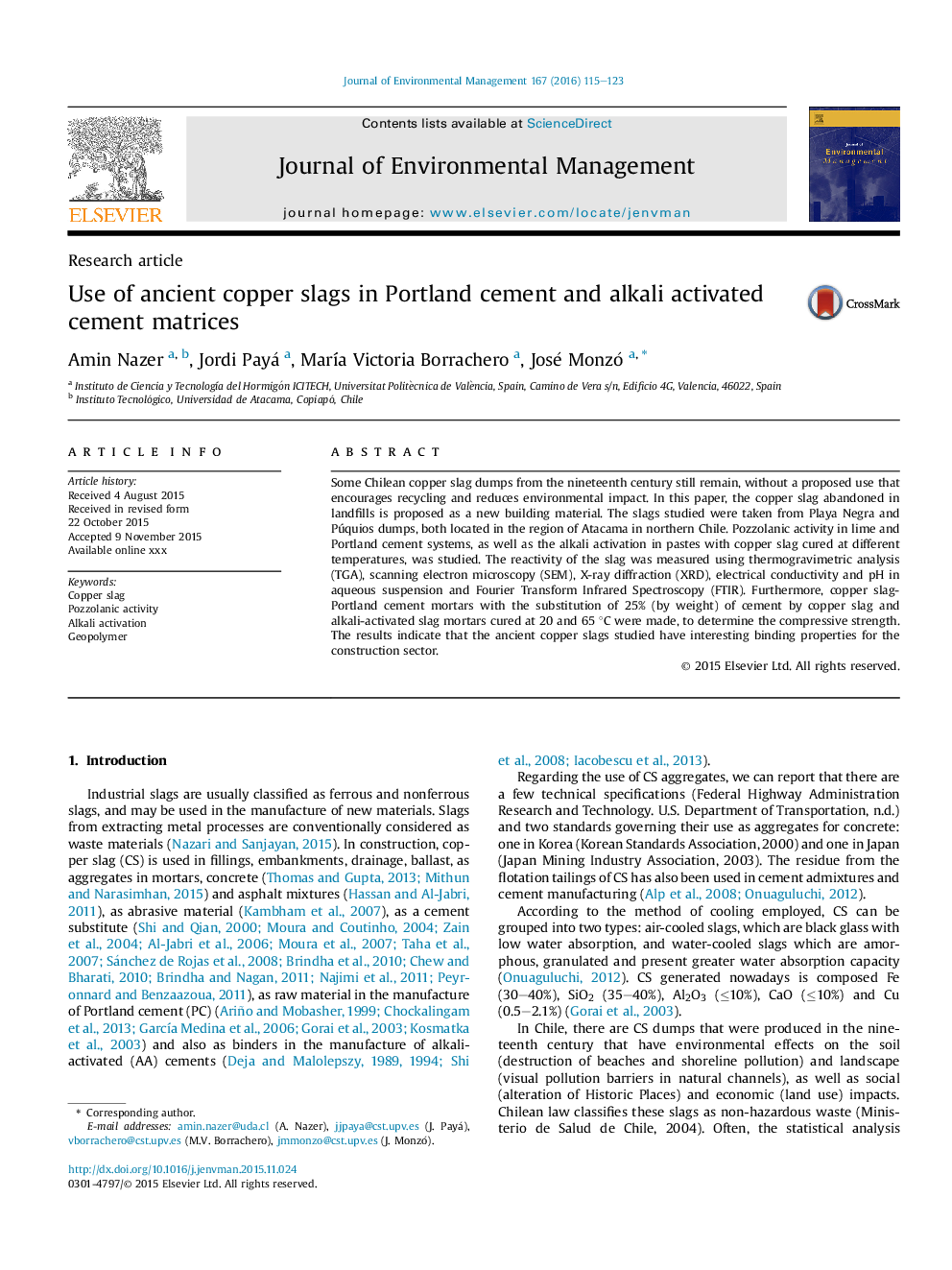| Article ID | Journal | Published Year | Pages | File Type |
|---|---|---|---|---|
| 7481223 | Journal of Environmental Management | 2016 | 9 Pages |
Abstract
Some Chilean copper slag dumps from the nineteenth century still remain, without a proposed use that encourages recycling and reduces environmental impact. In this paper, the copper slag abandoned in landfills is proposed as a new building material. The slags studied were taken from Playa Negra and Púquios dumps, both located in the region of Atacama in northern Chile. Pozzolanic activity in lime and Portland cement systems, as well as the alkali activation in pastes with copper slag cured at different temperatures, was studied. The reactivity of the slag was measured using thermogravimetric analysis (TGA), scanning electron microscopy (SEM), X-ray diffraction (XRD), electrical conductivity and pH in aqueous suspension and Fourier Transform Infrared Spectroscopy (FTIR). Furthermore, copper slag-Portland cement mortars with the substitution of 25% (by weight) of cement by copper slag and alkali-activated slag mortars cured at 20 and 65 °C were made, to determine the compressive strength. The results indicate that the ancient copper slags studied have interesting binding properties for the construction sector.
Related Topics
Physical Sciences and Engineering
Energy
Renewable Energy, Sustainability and the Environment
Authors
Amin Nazer, Jordi Payá, MarÃa Victoria Borrachero, José Monzó,
